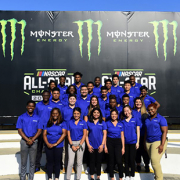How To Create An Equitable Workplace For Older Workers
By: Veronica Figueroa Fernandez, PRSA Orlando Diversity & Inclusion Chair
Nearly 2 out of 3 workers ages 45 and older have seen or experienced age discrimination on the job, according to results of a wide-ranging AARP workplace survey. More than 50 years after the Age Discrimination in Employment Act (ADEA) was signed into law, forbidding employment discrimination against anyone over 40 years of age in the United States, “age discrimination remains a significant and costly problem for workers, their families, and our economy.”
An investigation by ProPublica and the Urban Institute found that 56 percent of workers over the age of 50 reports that they were pushed out of their jobs by their employers before they were ready to retire. Some of the comments these employees heard include, “older workers can’t handle the day-to-day demands of the job,” and “they can’t be retrained and are too hard to manage.”
Patti Temple Rocks, author of “I’m Not Done: It’s Time To Talk About Ageism In The Workplace,” writes that ageism in the workplace produces slanted messaging and it is bad for business. She shares that the idea that workers become less valuable as they age ignores reality. “The years of experience and the confidence that comes from an expanded track record of success can make employees more effective,” she said.
She observes that when it comes to the creative world of advertising, the belief that people get better with experience is often replaced with the belief that the only answer is innovation, making us believe that innovation can only be achieved by young people.
What many companies do not understand is that older workers possess a depth of knowledge and experience that is worth paying for. They believe that investing in younger workers is cost-effective and less risky, when in fact according to the U.S. Bureau of Labor Statistics (BLS), workers 45-54 stayed on the job twice as long as those 25-34, so concentrating on training those over 40 was seen as a sound investment.
In 2019, the median age of workers in advertising, public relations, and related services was 38.5. It is no wonder that advertising is considered a “Peter Pan” industry, meaning few employees make it long enough to retire from their roles.
Organizations that sincerely value their employees and actively encourage them to reach their full potential need to create an equitable workplace where workers of all ages feel respected. So, how does one go about that?
Remove hidden bias from the job description.
You’ve seen the job descriptions looking for a high-energy, savvy digital native that can outline a communications strategy in their sleep. While many managers do not intend to exclude older job applicants, common phrases in job descriptions may seem that way. “Digital native” for example, may discourage qualified applicants who didn’t grow up with an iPhone attached to their hand, scrolling through different social media feeds. “High-energy,” “ninja,” and “guru” often refer to younger candidates.
More often than not, job applications require candidates to share milestone dates and information, such as college graduation year or highest GPA achieved. This can discourage older candidates from submitting an application, giving the perception that your company is searching for younger candidates. The best and brightest should be given an opportunity, regardless of age.
Portray a diverse public persona.
Many times, before submitting a job application, candidates will visit your website and social media profiles to see what the culture at your agency or organization is like. If you’re lucky enough to work in a diverse office, share that! Ensure that your agency’s public profile demonstrates racial diversity and generational diversity. If you’re using stock photos on your website, make sure that they portray diversity and inclusion.
Train your management to recognize hidden biases.
Are leaders in your organization making assumptions that older workers cannot grasp changing technology? How are you training your leadership to eliminate age assumption practices? Managers need the training to help acknowledge and remove those biases.
Update your policies.
In a perfect world, it would be enough to trust your employees to treat each other with respect, but that is why it is important to place policies in place and enforce them. Update your workplace harassment policies to include that your employees cannot discriminate based on age and stress that they will not tolerate unfair treatment. Additionally, if your company has the ability to, consider offering a competitive retirement incentive plan to encourage your employees to stay for the long-haul.
Offer professional development opportunities across the board.
Professional development should be an ongoing process throughout an individual’s career, ensuring that employees remain relevant and up to date with knowledge and skills. Like their younger colleagues, older employees will leave companies if there aren’t opportunities to continue to grow in their careers. Do you encourage your younger employees to attend industry seminars or to earn certifications but do not do the same for your older employees? There is always something new for your employees to learn. Offer training and career advancement opportunities, fair to all ages and levels.
Do you have any tips on creating an equitable workplace for older workers? Share them with us!










